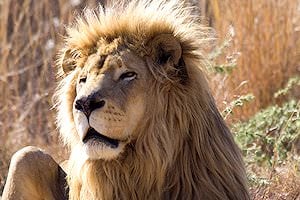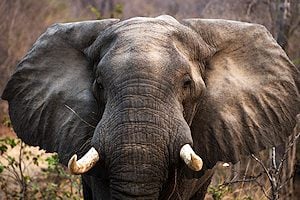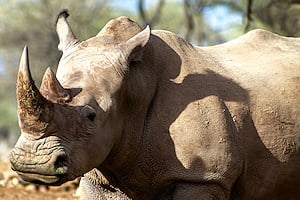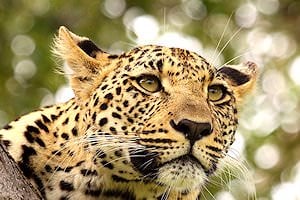- USD
- EUR
- GBP
- AUD
- CAD
- ZAR
The spring hare is a nocturnal species of rodent that occurs widely across Southern Africa. They are often encountered on night safaris in the wilderness areas of Southern Africa.
Need Advice?The spring hare is one of the few peculiar-looking species in Africa. They have surprisingly small bat ears and long tails and are a ginger color, except for the black tip on their long tails.

They occur in parts of Angola, Zambia, Zimbabwe, non-coastal Namibia, Botswana, southern Mozambique, Swaziland, and South Africa. The Namib Desert doesn’t offer enough sustenance in the form of vegetation for them to survive. They are absent in most of the fynbos-rich Cape Provinces, with their southernmost habitats found in the Eastern Cape.

This species’ wide distribution range and populations, thought to be abundant, are the main factors responsible for their conservation status labeled as least concern. There is very little information and recorded evidence to back this statement, and even population estimates of these animals are absent. They are a necessary protein for many indigenous people of Botswana and South Africa, with many historic tribes known to hunt them today, including the famous San tribes of the Kalahari. It is one of the only threats to their populations and doesn’t pose any significant setbacks for their survival.

The main component these animals look for in a habitat is a specific type of soil, namely sandier, finer soil. It may seem odd, but it enables them to quickly make borrows to live, protecting them from potential dangers when resting and shielding them from harsh weather extremes. Along rivers and within drier, more arid areas of bushveld or savanna typically fit this bill, and they are more common in these areas. Dry river banks are also perfect environments for these creatures to thrive in, along with overgrazed grass plains, floodplains, or other regions with little and less dense ground cover.

There is some evidence of these animals living in some community or group, whether for safety or social reasons or simply to make life easier for themselves. These small communities can be best seen when these spring hares prepare and dig their burrows. Some 3 or 4 burrows, each filled with its own little family, are dug in a triangular or circular shape close to each other, typically quite close to the largest tree found in their home range. They do have a home range in which they prefer to stay, which encompasses about 250 square meters, starting at their burrows.
We recommend the following National Parks and Private Reserves for the best chances of spotting the spring hare on safari game drives and bush walks.

They are occasionally active during the day but are predominantly nocturnal mammals. They are most active at night when they can be seen grazing and foraging within their home range or jumping to a water source to drink. Up to 40 Spring hares live within one of these home ranges. When they are active during the day, it is typically within the tunnels and between their burrows or the unchartered ground, which may soon be a tunnel. Their life expectancy reaches its peak at 14.5.

The Spring hare’s reproductive endeavors start when it reaches sexual maturity, typically when they weigh around 2.5kg, with its age varying depending on the favorability of the habitat they live in and the conditions they usually encounter. They give birth year-round and have a gestation period of between 2 and 3 months, giving them enough time during the year to give birth to 4 litters. After delivery, the offspring’s eyes are closed for three days, after which they open. From there, it takes a mere seven weeks before the young spring hares are ready and able to leave the care of their mothers and finally fend for themselves.

The Spring hare’s primary form of defense is flight. The sight, sound, or even smell of a predator is enough to trigger a quick response from these animals, attempting to get away. They use their strong hind legs and jumping abilities to run or jump away from attackers as fast and effectively as possible. Smaller cat species, such as caracals and servals, are their main predators, along with dog species, but any larger predators can also make prey out of them.





This website uses cookies. To learn more about how we use cookies, please view our Privacy Policy. By clicking "I Accept" on this banner, you consent to the use of cookies unless you have disabled them.





